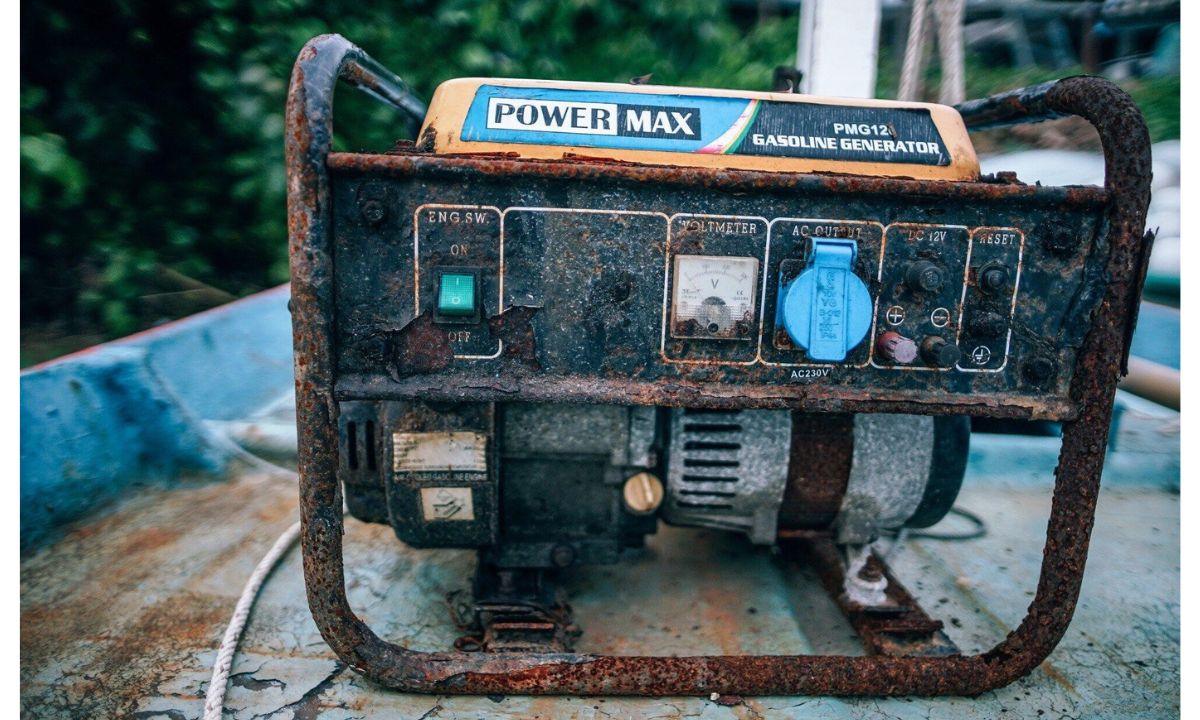How-To Guides
Protecting Victims with the Càada DASH Risk Identification Checklist

Understanding the Shift from Càada to SafeLives
Once known as Càada, the organization now operates under the name SafeLives. This national charity is dedicated to ending domestic abuse, stalking, and ‘honour’-based violence. Through comprehensive risk assessments, training, and support for practitioners, they aim to protect high-risk victims and their children. Their work underscores the importance of early intervention and coordinated efforts among multiple agencies.
The Purpose of the DASH Risk Identification Checklist
The DASH (Domestic Abuse, Stalking, and ‘Honour’-based Violence) Risk Identification Checklist is a vital tool for practitioners working with victims. Its primary purpose is to identify high-risk cases that need urgent attention and referral to Multi-Agency Risk Assessment Conferences (MARAC). By doing this, it helps ensure that the most vulnerable individuals receive the protection and support they need.
Benefits and Uses of the Checklist
The checklist serves multiple functions:
- Identifies high-risk cases that require immediate intervention.
- Provides a structured approach for practitioners to assess risk levels accurately.
- Facilitates referrals to MARAC, ensuring a coordinated response from various agencies.
Practitioners use this checklist to determine the severity of abuse and the imminent danger faced by victims. By standardizing the assessment process, it ensures that every case is evaluated thoroughly and consistently.
Components of the DASH Risk Identification Checklist
Domestic Abuse Signs and Risk Factors
Identifying the signs of domestic abuse is the first step in using the DASH checklist effectively. Practitioners should look for:
- Physical indicators such as bruises, cuts, or broken bones.
- Behavioral changes including anxiety, depression, or withdrawal from social interactions.
- Controlling behaviors like restricting access to money or communication with friends and family.
Understanding these signs helps practitioners assess the risk level and decide on the necessary interventions.
Recognizing Stalking Patterns and Behaviors
Stalking involves a series of actions that cause fear and distress. It can include:
- Unwanted communications through phone calls, emails, or social media.
- Following or monitoring the victim’s movements.
- Sending unwanted gifts or making threats.
Recognizing these behaviors is crucial for assessing the danger posed to the victim and taking appropriate action.
Understanding ‘Honour’-based Violence
‘Honour’-based violence is rooted in cultural practices that prioritize family honor over individual rights. It can involve:
- Physical violence to punish perceived dishonor.
- Forced marriages to maintain family reputation.
- Social ostracism or threats of harm.
Practitioners need to understand the specific cultural contexts and risks associated with ‘honour’-based violence to provide effective support.
Implementing the Checklist
Training and Guidance for Professionals
Effective implementation of the DASH checklist requires thorough training and guidance for professionals. This includes:
- Workshops and seminars to educate practitioners on using the checklist.
- Ongoing support from experienced trainers.
- Access to up-to-date resources and materials.
Training ensures that practitioners are well-equipped to use the checklist accurately and consistently.
Quality Assurance and Policy Support
Maintaining high standards in the use of the DASH checklist involves:
- Regular audits to ensure compliance with best practices.
- Policy updates to reflect new research and findings.
- Feedback mechanisms for practitioners to share their experiences and suggestions.
Quality assurance measures help improve the effectiveness of the checklist and ensure that it remains a reliable tool for assessing risk.
Data Insights to Improve Response Strategies
Collecting and analyzing data from the use of the DASH checklist provides valuable insights. This data can:
- Identify trends in domestic abuse, stalking, and ‘honour’-based violence.
- Highlight areas where additional support or resources are needed.
- Inform policy decisions to enhance victim protection and support.
Using data-driven approaches helps improve response strategies and outcomes for victims.
Multi-Agency Collaboration
Role of MARAC in Managing High-risk Cases
MARAC plays a crucial role in managing high-risk cases identified through the DASH checklist. It involves:
- Regular meetings of representatives from various agencies.
- Sharing information to develop coordinated action plans.
- Monitoring progress to ensure effective implementation of protective measures.
Collaborating through MARAC ensures a comprehensive and unified approach to protecting high-risk victims.
Importance of Coordinated Efforts Among Agencies
Effective multi-agency collaboration involves:
- Clear communication channels between agencies.
- Defined roles and responsibilities for each agency.
- Joint training sessions to promote understanding and cooperation.
Coordinated efforts ensure that all aspects of victim protection are addressed, from immediate safety to long-term support.
Impact and Goals
Protecting High-risk Victims and Their Children
The primary goal of the DASH checklist and MARAC is to protect high-risk victims and their children. This involves:
- Providing immediate safety measures such as emergency housing.
- Offering psychological support to help victims heal from trauma.
- Ensuring ongoing monitoring to prevent further abuse.
Protecting victims and their children is at the heart of the DASH checklist’s mission.
Reducing the Risk of Murder or Serious Harm
By identifying high-risk cases early and providing targeted interventions, the DASH checklist aims to:
- Reduce the risk of murder or serious harm to victims.
- Prevent escalation of abusive behaviors.
- Promote safety and well-being for all victims.
Reducing the risk of serious harm is a critical priority for practitioners using the DASH checklist.
Additional Resources
Practical Tools and Training Materials
SafeLives offers a range of practical tools and training materials to support practitioners, including:
- Guides and manuals on using the DASH checklist.
- Online courses for ongoing professional development.
- Resource libraries with up-to-date information and best practices.
Access to these resources ensures that practitioners have the knowledge and tools they need to protect victims effectively.
Support for Professionals and Organizations
SafeLives provides support for professionals and organizations through:
- Consultation services to address specific challenges.
- Networking opportunities to share experiences and learn from peers.
- Advocacy efforts to promote policies that enhance victim protection.
Supporting professionals and organizations is crucial for the success of the DASH checklist and overall efforts to combat domestic abuse, stalking, and ‘honour’-based violence.
The Way Forward
The DASH Risk Identification Checklist is an invaluable tool in the fight against domestic abuse, stalking, and ‘honour’-based violence. By equipping practitioners with the knowledge and tools they need, we can protect the most vulnerable individuals and prevent further harm.
If you are a practitioner working with victims, consider incorporating the DASH checklist into your assessment process. For more information, resources, and training opportunities, visit SafeLives’ website. Together, we can make a difference in the lives of those affected by domestic abuse.
YOU MAY ALSO LIKE
The Role of Abortion Clinics in Women’s Health Care
Conclusion
The DASH Risk Identification Checklist stands as a critical instrument in our collective efforts to combat domestic abuse, stalking, and ‘honour’-based violence. By providing a standardized method for identifying high-risk cases, it allows practitioners to act swiftly and decisively, ensuring that victims receive the protection and support they desperately need. The successful implementation of the checklist, coupled with robust training and multi-agency collaboration, can dramatically reduce the risk of serious harm or murder. It is imperative for all professionals working in this sector to be well-versed in its use and to remain committed to continual learning and improvement. SafeLives is dedicated to equipping you with the necessary tools and resources to make this possible. Visit our website for further information, training opportunities, and support. Together, we can protect the most vulnerable and drive meaningful change in the fight against domestic violence.
Frequently Asked Questions
- What is the DASH Risk Identification Checklist?
- The DASH Risk Identification Checklist is a tool used by practitioners to assess the risk of domestic abuse, stalking, and ‘honour’-based violence. It helps identify high-risk cases and ensure appropriate interventions.
- How does MARAC help in managing high-risk cases?
- MARAC (Multi-Agency Risk Assessment Conference) involves regular meetings of various agency representatives to share information, develop action plans, and monitor progress, ensuring coordinated protective measures for high-risk victims.
- What kind of data insights can be gained from using the DASH checklist?
- Data from the DASH checklist can identify trends in abuse, highlight areas needing more resources, and inform policy decisions to enhance victim protection and support.
- What are some resources available to practitioners using the DASH checklist?
- Practitioners have access to practical tools such as guides, online courses, and resource libraries to support them in effectively using the DASH checklist and protecting victims.
- Why is multi-agency collaboration important in protecting high-risk victims?
- Coordinated efforts among various agencies ensure comprehensive victim protection by establishing clear communication channels, defining roles and responsibilities, and conducting joint training sessions.
How-To Guides
The Complete Guide to Liquid-Cooled Generator Repair

Liquid-cooled generator repair is essential for providing reliable power, especially in critical applications like hospitals, data centers, and industrial facilities.
Ensuring your generator is functioning optimally is vital to prevent unexpected outages and costly repairs. This guide will walk you through the steps necessary to identify and repair common issues with liquid-cooled generators.
Safety First
Before starting any liquid-cooled generator repair, put safety first. Always turn off the generator and disconnect it from all power sources. Wear safety gear like gloves and goggles. These protect you from any hot fluids or flying debris during repairs. Leaks can cause hazards like slippery floors or harmful fumes.
Pay attention to the generator’s surroundings. Keep the area around the generator clear of unnecessary items. This prevents trips and falls. Ensure the generator is on a stable and level surface. Avoid working on wet surfaces to minimize slipping risks. Learn how to use your tools safely.
Inspect the Cooling System
Begin by checking the coolant levels in your liquid-cooled generators. Ensure the generator is on a flat surface and cooled down before removing the coolant cap. It should be clear and have the right color for the type used.
Next, examine the hoses and connections in the cooling system of liquid-cooled generators. Look for any cracks, leaks, or signs of wear. Tighten loose connections as needed. Ensure the radiator is free of debris and dirt. Regularly inspecting these components helps maintain the efficiency and longevity of your generator.
Evaluate the Engine Oil
Engine oil plays a crucial role in the health of any generator. Start by checking the oil level. Low oil levels can cause generator noise. If the oil is low, add the recommended type and amount. Always refer to your user manual for this information.
Check the condition of the engine oil. This may indicate the oil needs changing. Dirty oil can lead to increased generator noise. Replace the oil as per the manufacturer’s instructions. Regular oil checks help prevent damage.
Examine Electrical Connections
When examining the electrical connections of air-cooled generators, first ensure the generator is turned off. Look for any loose, frayed, or damaged wires in the system. These issues can interrupt power flow and create safety hazards. Secure all loose connections and replace any worn-out wires immediately.
Next, inspect the condition of the terminal connections in air-cooled generators. Ensure each terminal is tight and corrosion-free. Clean terminals with a suitable cleaner if needed. Proper maintenance of electrical connections helps avoid unexpected outages and prolongs generator life.
Test the Generator
Testing the generator is a vital part of generator repair. Begin by ensuring the generator is in a safe and operational area. Start the generator according to the manual instructions. Let it run for a few minutes to reach a stable operating condition. Listen for any unusual noises that may indicate an issue.
Afterward, inspect the output of the generator. Use a multimeter to measure the voltage and frequency. Compare your readings with the specifications in the user manual. Ensure all electrical systems are functioning correctly by testing each connected appliance. This process confirms that repairs were successful.
Learn the Guide to Liquid-Cooled Generator Repair
In conclusion, regular maintenance and careful inspections are key to keeping your liquid-cooled generator repair running smoothly. Follow this guide to identify and fix common problems, ensuring reliable performance and avoiding costly repairs.
Safety should always be your top priority during any repairs. By taking these steps, you can extend the life of your generator and ensure it functions when you need it the most.
Visit our blog for more!
How-To Guides
Why You Should Never Ignore Website Revamping for Success

In today’s digital age, your website acts as a virtual storefront, serving as the first point of contact for potential customers. The phrase “never judge a book by its cover” might be true in many scenarios, but when it comes to websites, first impressions matter greatly. In fact, web design influences 94% of first impressions. This article explores why you should never ignore website revamping, particularly at lordwoods.com, to ensure your business stays competitive and relevant.
Why First Impressions Matter in Web Design
The first encounter a visitor has with your website sets the tone for their entire experience. A website that is outdated or difficult to navigate can deter potential customers instantly. It’s crucial to understand that the aesthetics, functionality, and user experience all play vital roles in forming that critical first impression. A well-designed site can convey professionalism, trustworthiness, and quality, which are essential attributes for small businesses, web developers, and marketing professionals.
The Importance of Website Revamping
Revamping a website involves more than just aesthetic updates; it’s about breathing new life into your online presence. It includes optimizing the user experience, enhancing the functionality, and ensuring that your site aligns with current trends and technology. Ignoring these updates can lead to missed opportunities, decreased engagement, and negative perceptions. Let’s explore why website revamping is vital for maintaining your brand’s image and achieving business success.
The Impact of Outdated Websites
Loss of Credibility
An outdated website can severely damage your credibility. When potential customers land on your page, they expect to find a modern and trustworthy site. If your website looks like it’s stuck in the early 2000s, visitors may question your brand’s expertise and professionalism. In an era where consumer trust is paramount, maintaining an updated website is crucial for building and retaining credibility.
Decrease in User Engagement
Engagement is the lifeblood of any successful website. Outdated designs and content can lead to a decline in user engagement as visitors struggle to connect with your brand. A site that lacks interactive elements, fresh content, or intuitive navigation can result in high bounce rates and low conversion rates. Revamping your website with engaging features and relevant content can encourage visitors to stay longer, explore further, and interact with your brand.
Negative Impact on SEO
Search engines favor websites that offer excellent user experiences and relevant content. An outdated site may not meet the criteria for mobile-friendliness, fast loading times, or secure connections—all of which impact SEO rankings. Failing to update your website can result in lower search engine rankings, reducing your visibility and organic traffic. A revamp can improve your site’s SEO performance and help attract more visitors to your site.
Benefits of Regular Website Revamping
Improved User Experience
A revamped website can significantly enhance the user experience. It allows you to implement intuitive navigation, faster loading times, and mobile responsiveness. When visitors can easily find what they’re looking for and enjoy a seamless browsing experience, they’re more likely to convert into paying customers. A positive user experience encourages repeat visits and fosters customer loyalty.
Enhanced Security
Cybersecurity threats are becoming increasingly sophisticated, making website security a top priority. Outdated websites are more vulnerable to attacks, leading to data breaches and compromised customer information. Regular website revamping ensures that your site is equipped with the latest security measures, protecting both your business and your customers from potential threats.
Better Conversion Rates
A well-designed website can have a direct impact on conversion rates. By optimizing your site for user experience, updating content, and creating clear calls-to-action, you can guide visitors through the sales funnel more effectively. A fresh, modern design can instill confidence and encourage visitors to take desired actions, ultimately leading to increased sales and business growth.
Signs Your Website Needs a Revamp
Outdated Design and Content
If your website still features outdated design elements, such as Flash animations or cluttered layouts, it’s time for a revamp. Additionally, if your content hasn’t been updated in years, visitors may perceive your brand as inactive or irrelevant. A modern design and fresh content are essential to keep your audience engaged and informed.
Slow Load Times
In today’s fast-paced world, users expect websites to load quickly. Slow load times can frustrate visitors and lead them to abandon your site altogether. A revamp can optimize your site’s performance, reduce load times, and ensure that visitors have a smooth browsing experience from start to finish.
Poor Mobile Responsiveness
With the increasing use of smartphones and tablets, mobile responsiveness is no longer optional—it’s a necessity. If your website doesn’t adapt seamlessly to different screen sizes, you’re likely losing potential customers. A responsive design ensures that your site looks and functions flawlessly on all devices, providing a consistent experience for users regardless of how they access your site.
Strategies for Effective Website Revamping
Conducting a Website Audit
Before embarking on a website revamp, it’s essential to conduct a comprehensive audit of your existing site. Evaluate its performance, user experience, and content. Identify areas for improvement and prioritize changes based on their potential impact. A thorough audit provides valuable insights that inform your revamping strategy and ensure that your efforts are focused on the most critical aspects.
Updating Design and Content
A successful revamp involves updating both the design and content of your website. Consider incorporating modern design elements, such as clean layouts, appealing visuals, and consistent branding. Additionally, update your content to reflect current trends, showcase new offerings, and address the evolving needs of your target audience. Fresh content not only engages visitors but also improves your site’s SEO performance.
Enhancing User Experience
User experience should be at the forefront of your revamping strategy. Ensure that your site is easy to navigate, with logical menus and intuitive user interfaces. Implement interactive features, such as chatbots or personalized recommendations, to enhance engagement. Prioritize accessibility by ensuring that your site is usable for individuals with disabilities. A positive user experience leaves a lasting impression and encourages visitors to return.
YOU MAY ALSO LIKE
Why You Should Ditch Cheap Templates and Invest in Custom Web Design
Conclusion
In conclusion, you should never underestimate the power of website revamping, especially when it comes to impressing potential customers and maintaining your brand’s credibility. An outdated website can lead to loss of credibility, decreased user engagement, and negative SEO impacts. On the other hand, regular revamping offers numerous benefits, including improved user experience, enhanced security, and better conversion rates.
By recognizing the signs that your website needs a revamp and implementing effective strategies, you can ensure that your online presence remains relevant and competitive. Remember, a well-maintained website is a powerful tool for attracting and retaining customers, ultimately driving business growth.
If you’re ready to take your website to the next level, contact us today for expert web revamping services. Our team of professionals is here to help you create a modern, engaging, and functional website that captivates your audience and supports your business goals.
FAQs
1. What is website revamping?
Website revamping involves updating and improving various aspects of a website, including design, content, and functionality, to enhance user experience and achieve business objectives.
2. How often should I revamp my website?
It’s recommended to review and update your website every 2-3 years to ensure it remains relevant, secure, and aligned with current trends and technology.
3. What are the benefits of website revamping?
Website revamping offers improved user experience, enhanced security, better conversion rates, and increased credibility, ultimately supporting business growth.
4. How do I know if my website needs a revamp?
Signs that your website needs a revamp include outdated design and content, slow load times, poor mobile responsiveness, and declining user engagement.
5. What are the key strategies for effective website revamping?
Effective strategies for website revamping include conducting a website audit, updating design and content, and enhancing user experience with intuitive navigation and interactive features.
How-To Guides
How to Save Money When Buying Office Furniture: A Guide

Setting up an office, whether at home or for a business, can be an expensive undertaking. However, purchasing quality office furniture doesn’t have to break the bank. You can create a functional, stylish workspace with the right strategies while keeping costs down. You can find great office furniture deals that meet your needs and budget by being strategic about where and how you shop. Here are effective ways to save money when buying office furniture.
Consider Clearance Sales and Recycling Options
One of the easiest ways to save money on office furniture is by shopping during clearance sales or opting for recycled furniture. Many retailers offer affordable office furniture clearance events where you can find quality desks, chairs, and storage units at a fraction of their original prices. These sales typically occur when stores try to clear out older inventory to make room for new collections so you can snag high-quality items at significant discounts.
In addition to clearance sales, consider purchasing recycled or refurbished office furniture. Many companies specialize in restoring used furniture to like-new condition, which not only saves you money but is also an environmentally friendly choice. Look for local businesses or online retailers that offer recycled furniture options to find durable, budget-friendly pieces for your office.
Buy in Bulk for Better Discounts
Buying in bulk often leads to significant savings if you’re outfitting a larger office space or purchasing multiple pieces of furniture. Many furniture retailers offer discounts when you buy multiple items at once. For example, you might get a percentage off when purchasing several chairs or desks simultaneously. When buying in bulk, be sure to negotiate for additional discounts. Retailers are often willing to offer reduced prices on larger orders, especially if you’re buying furniture for an entire office. Be upfront about your budget and ask for a deal—trying never hurts. Bulk buying also simplifies the decision-making process since you’ll likely end up with a cohesive set of furniture that fits well together.
Look for Multi-Functional Furniture
Investing in multi-functional furniture is a wise way to save money and maximize space in your office. Pieces that serve more than one purpose help reduce the number of items you need to buy, which saves both money and floor space. For example, consider a filing cabinet that doubles as a seating area. Multi-functional furniture is handy for small home offices where space is limited. Choosing furniture that can perform double duty will create a more efficient workspace without cluttering your office with unnecessary items. Look for versatile pieces that can be reconfigured or expanded as your office needs to evolve.
Opt for DIY Assembly
Many retailers offer assembly services when buying office furniture, but these often come with additional costs. To save money, opt for DIY assembly whenever possible. While assembling furniture may require time and effort, it’s a cost-effective way to avoid extra charges. Many popular furniture brands, especially those that sell flat-pack items, provide easy-to-follow instructions for self-assembly. If you prefer to prevent assembling furniture on your own, consider enlisting the help of friends or family members. Not only will you save money, but you’ll also get the satisfaction of putting your office together on your terms.
Compare Prices Online and In-Store
A way to find affordable office furniture is by comparing prices online and in-store. Online shopping offers the convenience of browsing multiple retailers from the comfort of your home, and many websites provide discounts or promotions that you won’t find in physical stores. However, consider visiting brick-and-mortar furniture stores. Sometimes, you can find special in-store promotions or clearance events that are not advertised online. By comparing prices from different platforms, you can learn the best deals and avoid overpaying for the same items. Use online tools or apps that aggregate prices across various retailers to make price comparisons easier. If you’re buying online, remember to factor in shipping costs, as they can affect the final price of your purchase.
Explore Secondhand Furniture Options
Purchasing second-hand office furniture is another excellent way to cut costs. Many businesses and individuals sell gently used office furniture when they’re downsizing, upgrading, or relocating. These pieces are often in good condition and sold at a fraction of their original price. Check online marketplaces like Craigslist, Facebook Marketplace, or dedicated second-hand office furniture websites to find affordable options in your area. Estate sales, auctions, and thrift stores are great places to find used furniture. Before purchasing, inspect the items for any wear and tear to ensure they meet your standards. Buying second-hand saves you money and allows you to find unique, high-quality pieces that may no longer be available in stores.
Wait for Seasonal Sales
Timing your office furniture purchases around seasonal sales can lead to significant savings. Retailers often hold major sales events during holidays, such as Labor Day, Black Friday, and Memorial Day. These events typically offer deep discounts on furniture, including office items, allowing you to get the pieces you need at a much lower price. Furniture stores also tend to have clearance sales at the end of the year or during inventory turnover periods when they’re trying to clear out old stock to make room for new arrivals. If you’re not in a rush to set up your office, waiting for these sales can result in substantial savings. To stay informed about upcoming sales, sign up for email newsletters or follow your favorite furniture retailers on social media.
Prioritize Quality Over Quantity
When shopping for office furniture, going for the cheapest options is tempting. However, lower-priced furniture is often made with inferior materials that won’t last as long as higher-quality alternatives. While sticking to your budget is necessary, investing in durable, well-made furniture will save you money in the long run by reducing the need for frequent replacements. Focus on purchasing key pieces, like a sturdy desk or ergonomic chair, to provide long-term comfort and functionality. Once you have the essentials, you can then add more items as your budget allows. You’ll create an efficient and cost-effective workspace by prioritizing quality over quantity.
Saving money on office furniture doesn’t mean sacrificing style or quality. By exploring clearance sales, buying in bulk, considering secondhand options, and timing your purchases strategically, you can furnish your office at a fraction of the cost. Keep these tips in mind as you shop, and you’ll be well on your way to creating a budget-friendly office space that meets your business needs.
-

 Business5 months ago
Business5 months agoExploring the Rental Market: Properties for Rent in Malta
-

 How-To Guides5 months ago
How-To Guides5 months agoComprehensive Guide to Cockwarming: Enhancing Intimacy and Connection
-

 Home Improvement6 months ago
Home Improvement6 months agoEco-Friendly Round Rug Options for Sustainable Living in NZ
-

 Apps and Games6 months ago
Apps and Games6 months agoDiscover Tickzoo: The Ultimate Platform for Video Content Lovers and Creators
-

 Fashion6 months ago
Fashion6 months agoBlack Magic: The Elegance and Sophistication of Ultimate Homecoming Dresses in Black
-

 Tech7 months ago
Tech7 months agoExploring the Features of Innocams: The Future of Security
-

 Business7 months ago
Business7 months agoUnlock Potential: Explore Pikruos Services
-

 Health6 months ago
Health6 months agoSports First Aid Kits: Must-Have Items for Athletes and Their Coaches
